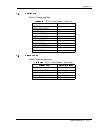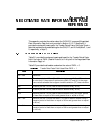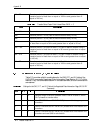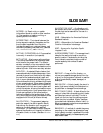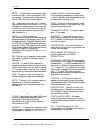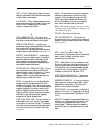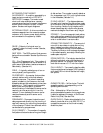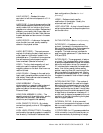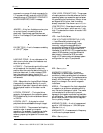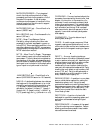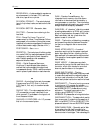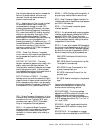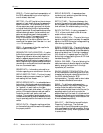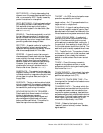
Glossary
G-4 Maxtor Atlas 10K III 18/36/73 GB Ultra160 SCSI
EXTENDED CONTINGENT
ALLEGIANCE – A condition generated by a
target and announced with a INITIATE
RECOVERY message. The mode is used
when multi-step extended error recovery
procedures are required to prevent interference
as from other initiators in a multi-initiator
system. See also contingent allegiance.
EXTERNAL DRIVE – A drive mounted in an
enclosure separate from the computer system
enclosure, with its own power supply and fan,
and connected to the system by a cable.
FALSE – Refers to the logical-zero (or
“negated”) state of a binary number. See also,
signal negation.
FAST SCSI – The SCSI protocol that governs
fast synchronous transfer. See also Synchronous
Transfer.
FCI – Flux Changes per Inch. The number of
magnetic field patterns that can be stored on a
given area of disk surface, used as a measure of
data density. (See also
BPI.)
FIELD – A logically related group of one or
more physically contiguous bits.
FILE SERVER – A computer that provides
network stations with controlled access to
shareable resources. The network operating
system is loaded on the file server, and most
shareable devices (disk subsystems, printers) are
attached to it. The file server controls system
security and monitors station-to-station
communications. A dedicated file server can be
used only as a file server while it is on the
network. A non dedicated file server can be
used simultaneously as a file server and a
workstation.
FIRMWARE – Permanent instructions and
data programmed directly into the circuitry of
read-only memory for controlling the operation
of the computer. Distinct from software, which
can be altered by programmers.
FLUX DENSITY – The number of magnetic
field patterns that can be stored in a given length
of disk surface. The number is usually stated as
flux changes per inch (FCI), with typical values
in the thousands. (See also
FCI.)
FLYING HEIGHT – The distance between
the read/write head and the disk surface, made
up of a cushion of air that keeps the two objects
from touching. Smaller flying heights permit
denser data storage but require more precise
mechanical designs. Also known as fly height.
FORMAT – To write a magnetic track pattern
onto a disk surface, specifying the locations of
the tracks and sectors. This information must
exist on a disk before it can store data.
FORMATTED CAPACITY – The amount of
room left to store data on a disk after writing
sector headers, boundary definitions, and
timing information during a format operation.
The size of a Maxtor drive is always expressed
in formatted capacity, accurately reflecting the
usable space required.
FORM FACTOR – The industry standard that
defines the physical, external dimensions of a
particular device. For example, most Maxtor
hard disk drives use a 3 1/2-inch form factor.
FULL HEIGHT – Term used to describe a disk
that occupies the vertical space (3.250 inches) of
a full sized 5.25-inch drive. See also half height,
low profile.
GIGABYTE (GB) –1 billion bytes. The total
accessible capacity varies depending on the
operating environment.
Glist – Abbreviation. When the drive
encounters a defective sector during regular use,
it adds the address of the sector to the Grown
Defect List (Glist). See also Plist.
GUIDE RAILS – Plastic strips attached to the
sides of a hard disk drive in an IBM PC/AT or
compatible computer so that the drive easily
slides into place.




